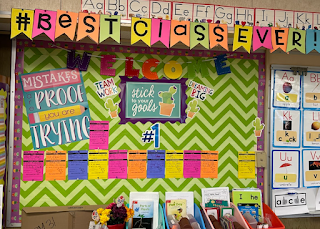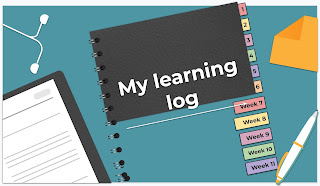By Heather Pfrunder, M.A.Ed SDC Teacher and Education Specialist
December 30, 2021
Watching Kagan strategies in action one can’t help but be excited at the level of student engagement. Student responses which exude inactive reflection and minimal regurgitation transform into animated critical thinking. The brain science and research behind Kagan strategies is impressive and exciting: it takes in account the varied ways our brain is engaged and uses structures and systems to ensure optimal learning. Through the practice of collaborative learning, the brain simultaneously is engaged in multiple parts. The social structures form an emotionally safe learning environment, often while nourishing the brain through motion. You could spend a college semester learning all the facets to Kagan and the brain research behind each minute component for it’s cooperative learning structures. However, teachers with fledgling Kagan experience often are encouraged to simply “start with the Robins.” Kinda Techy Teachers on TPT has a great free resource to access visual explanations and how to use the top 5 Robin Structures.
Click Here for a Free Resource!
Example of a “Robin” Structure in the free TPT
Resource linked above.
This way teachers and students learn some of the basic structures and can apply them to any subject matter. It is not the content that is being changed, rather the format of the lesson. For many teachers the quick diagram of expectations found in the Kagan flip book is simple enough to function for many of their students.
Flip Book page example.
Colleague Randi Muehlen describes many wonderful ways to implement Kagan in her post Kids Love to Talk. However, if we are teaching ALL students, and “all means all,” chances are you have had a student (or three) who are challenged to cooperatively work in cooperative learning groups. In reflection, this challenge happens for several reasons: social skill deficits, academic skill deficits, or a combination of both represented by cognition challenges. So here we go again, my teacher friends! A list of shortcuts, tips, and printable visual aids to address Kagan challenges is headed your way! Because honestly, the learning pay-off is so very worth it!
1.Social Skills: In trouble shooting social skills challenges (i.e. silliness, off-task behavior, bullying, shyness…) there are commonalities among strategies to address the different kinds of social skill deficits. Modeling, praise, team reflection, and purposeful team role assignments can shape mal-adaptive behaviors into behaviors that are productive and helpful team-building. To address the needs of all students you may find yourself rotating between strategies to give all unique students a chance to exercise growth in an area of social skills development. Chapter 11 of the Kagan book outlines Social Skills challenges, solutions, and suggested structures and feedback. Here is a condensed and shortened list of challenges and solutions for your reference:
Kagan Social Skills Solutions. Click here!
Social skills are a major component to cooperative learning. However, often they are a way to cover up another challenge: academic skill deficits.
2.Academic Skill Deficit: In this area there are two key take-aways to address supporting students that may need more scaffolding in order to actively participate with their peers. The first is relatively simple: do your students understand the concepts that they are learning? Are they able to use key vocabulary in discussions? For students with unique learning needs this may mean that they may need to use notes with how-to steps and examples or simple vocabulary sheets with visuals and/or sentence frames. Below are some examples of content vocabulary.
Top: More descriptive vocabulary with visuals to aid in conversation
for mid-need learners -found on TPT American Revolution Word Vocab.
Bottom: Simple sorting and matching vocabulary for collaboration activities
for higher-need/less verbal learners - found on TPT water cycle bingo.
The second scaffold has to do with grouping and “Positive Interdependence.” (This is the “P” in the Kagan acronym “PIES” standing for Positive Interdependence, Individual Accountability, Equal Participation, and Simultaneous Interaction.) How we set up individuals in groups can either benefit or challenge academic growth. Strong interdependence means that each member of the group is needed for the task to be completed. This takes careful structuring of both the task instructions (ensuring that each member of the group is building on each other’s contributions) and the careful structuring of groups. For example, the highest achieving learner typically should not be paired with the lowest achieving learner. Instead, group your students into 4 groups: high, high-medium, medium-low, and low. Keep teams within 1-2 levels within their range and assign roles based on strengths and/or needs. Number and group roles or strengths within numbers 1-4, so that you can make instructional decisions which will work for both the individual and the team. If individual growth is not happening at the rate you were hoping for and you have adjusted strategies based on challenges, it may be time to mix up groups.
Left: Colorful Crayon Creations has this Kagan structure mat free.
Right: Students pictured here are working in Kagan Groups.
Their roles correspond with their numbers.
3.Cognition Challenges: As a teacher who is charged with the teaching of students with unique learning needs, Kagan can seem daunting. It is skill upon skill that needs to be taught before groups even come close to true cooperative learning. For this I have found that starting with simple social skills activities paired with specific structures and visuals create better successes. Think about some of our SEL lessons where we practice celebrating and sharing as individuals. A simple practice of “Find Someone Who…” is a fun way to practice communication skills (click the link below for the resource from True Little Teacher on TPT). I would initially have students practice this while seated with a “Face Partner,” but would work towards having students walk and find a friend within a specified area of the classroom (painters tape on the floor is fantastic for setting visual boundaries).
Someone Who Kagan Resource for Unique Learners
Other additional resources for Kagan really have to do with setting expectations and teaching the specific structures. What does expected cooperative learning look like? While Kagan uses structures and processes to facilitate learning, it prefers the flexibility of original thought. Afterall, it is the purpose is critical thinking. However, for learners with higher levels of challenge, processes and expectations need to be specifically outlined for them. To facilitate this I have created a special resource.
Click Here for Adapted Kagan Strategies, Free!!
Being on the look out for what is working (or not) and why is second nature to educators. Simple adjustments will ensure the positive impact of both social and academic learning with Kagan. Until next time, wishing you lots of cooperative learning joy!!
Like what you read? Join me in upcoming blog posts where I continue to put these strategies into place and share resources!
Kagan, S., & Kagan, M. (2015) Kagan Cooperative Learning. Kagan Publishing.





















